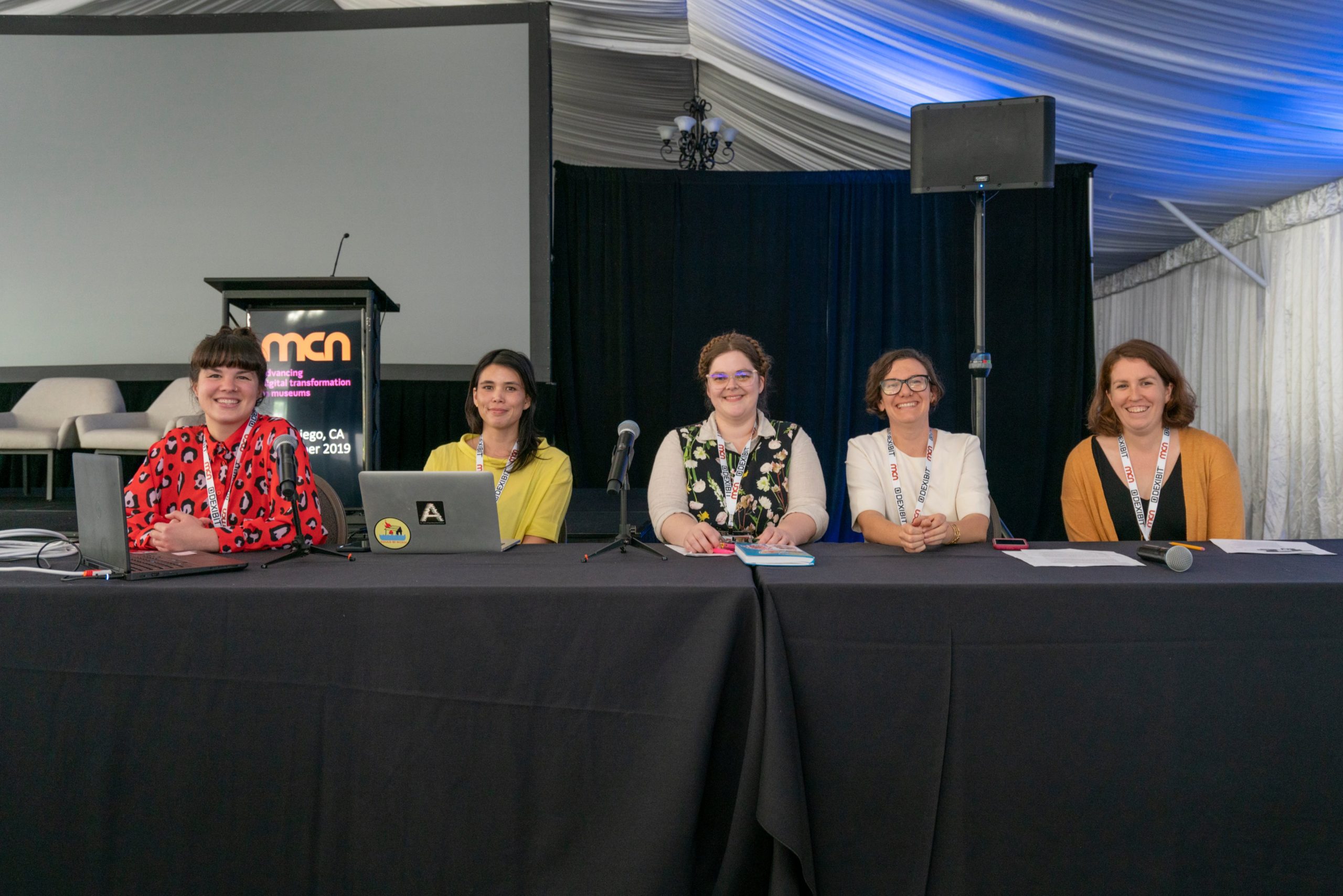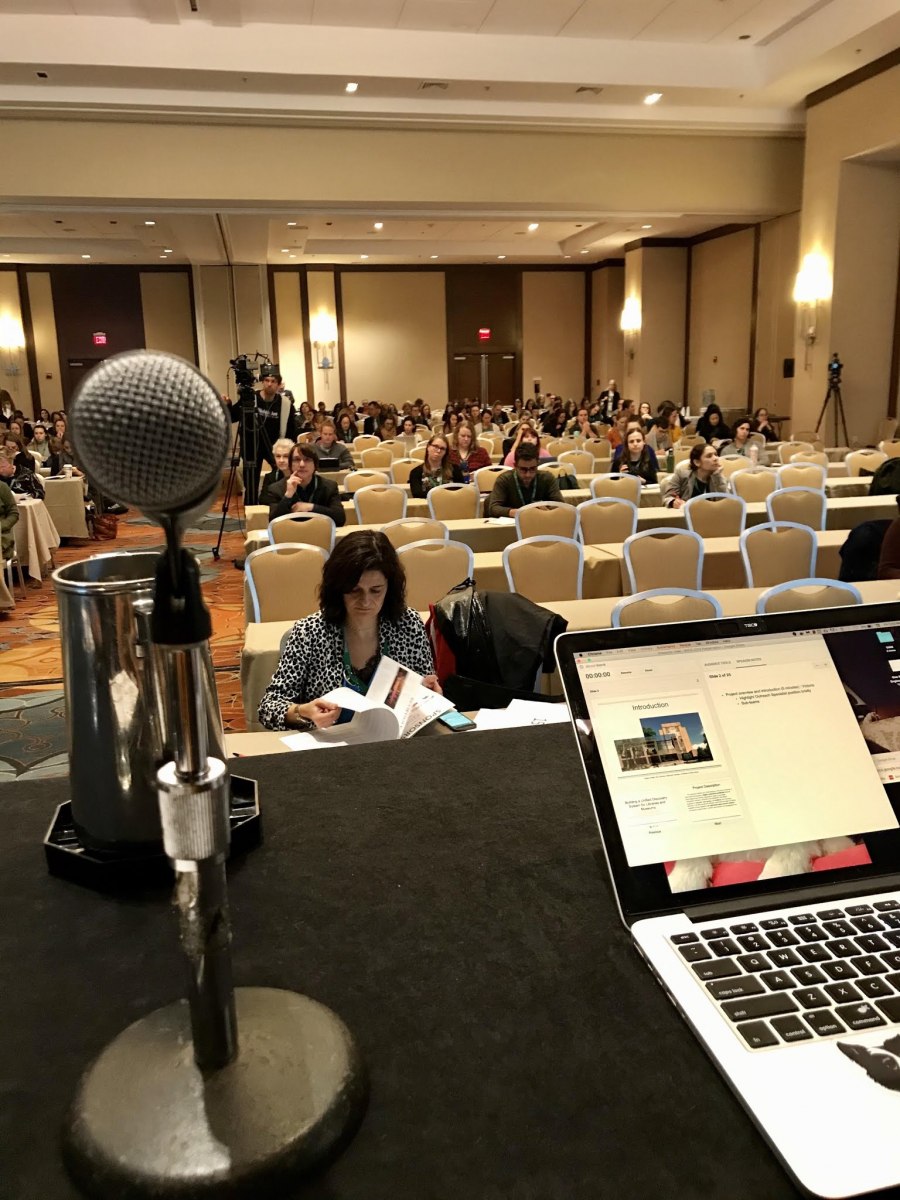Last fall, the Snite Museum staff working on the MARBLE project presented at two of the biggest conferences in their fields: the Museum Computing Network (MCN) and the Association of Registrars and Collections Specialists (ARCS). What follows are their key takeaways from each conference as well as links to their presentation materials.
Museum Computing Network 2019
Abby Shelton
From November 5-8, 2019, hundreds of museum technologists converged on San Diego, California for the Museum Computing Network conference.
It seemed to me that attendees and panelists displayed an increased sense of fatigue towards emerging technology. The deep unease with some of the ways that GLAM institutions have used technology without thinking about important ethical considerations was palpable in conference presentations, Twitter conversations, and break-time discussions.
There was also an emphasis on nurturing a culture of diversity and inclusion, not only in organizational structures but in collections metadata, copyright policy, and social media content.
Three of the best sessions of the conference were the plenary panels held with leaders in the museum field to discuss pressing issues. Microsoft sponsored the first panel on emerging technology with representatives from the Cleveland Museum of Art, MIT Museum, and Cooper Hewitt. Panelists began by addressing the question of how to approach emerging technology, particularly in a situation where they would be called upon to advise museum leadership. Several suggested that when it comes to emerging technology, like artificial intelligence or virtual reality application, GLAM institutions don’t ask “why?” enough. As someone who thinks about user needs a lot, this mindset resonates. We should be able to provide a use case for every project that our institutions undertake. Instead of jumping into something because it’s flashy or new or proposed by a donor usually makes for a less-than-compelling visitor experience.
The other plenary panel that struck home for me was the Thursday morning discussion on data ethics, privacy, and security. As someone who works in a collections data adjacent role, I know that we have policy guidelines for some of our sensitive information: gift agreements from anonymous donors, insurance valuations, storage locations. But, what struck me about this panel was how little we have trained museum staff in data security and privacy best practices. I appreciated hearing about the Denver Art Museum’s data on-boarding for new staff and the annual re-training of staff on how to safely store and classify information. The panel made me wonder if academic museums in particular rely heavily on their parent institutions to train staff on data collection and handling, rather than educating staff about particular record-keeping best practices for museums.
Another major theme highlighted by several presentations was open access or the open GLAM movement. Two panels on domestic and international copyright law and one featuring institutions that have implemented open access policies underscored the importance of open access for community engagement and involvement in making and remaking cultural heritage collections. While it was exciting to hear about the open access work that the Yale University museums, the Getty Research Institute, and other large GLAM institutions are doing, the sessions certainly prompted questions of how open access could be feasible for small institutions. In my conversations with faculty and students at our campus, the need for reusable images is strong but we often have to balance that need against our capacity for copyright review.

Our MCN panel, l-r: Juliet Vinegra (Philadelphia Museum of Art), Katrina Wratschko (Philadelphia Museum of Art), Adrienne Figus (Smith College), Jessica Breiman (University of Utah), and Abby Shelton (Snite Museum of Art, MARBLE).
Photo credit: Laura Shea, Mount Holyoke College Art Museum
Association of Registrars and Collections Specialists 2019
Hanna Bertoldi
The 2019 Association of Registrars and Collections Specialists (ARCS) Conference was held in Philadelphia during the first week of November. The keynote, Joan Baldwin, kicked off the conference talking about leadership in museums. She spoke about problems in the museum industry that were not surprising to anyone in the room—lack of diversity, salary disparity, sexual harassment, and inflexibility to change. Baldwin concluded her talk by urging everyone in the room to be the change that they wish to see. Although she was talking about leadership, I think that this concept can apply to collections data as well. Throughout the conference, I was attracted to projects that used collections data to leverage change in their organization.
The San Francisco Arts Commission (SFAC) staff—in conjunction with the data scientists at Data-Science-SF—used their collections data to write a ten-year master plan for prioritizing care and detailing costs for maintaining their permanent collection. They used this plan to successfully advocate for more funding from the Capital Division. By presenting their collections data in a way that their funding organization understood, they were able to show how deferred maintenance on cultural assets results in greater future expenses.
In the case of SFAC, the project started with an inventory. The staff completed a wall-to-wall inventory to gather data for their cost analysis. This was a common point made during other presentations as well. Parks Canada inventoried objects while moving a collection of over 2 million items into an existing collections facility an hour away. Due to time constraints, this was completed with only the essential information, and further reconciliation was planned for the future. This method of inventory was not their preferred method, but was a necessary solution because of the backlog of bad information in the database.
I was struck by how many projects would have been smoother if they could have started with good data. In the first year and a half of the MARBLE project, one of the lessons that I have learned is the importance of an inventory, a notion supported in the book, Managing Previously Unmanaged Collections: A Practical Guide for Museums (2016) by Angela Kipp. An inventory creates a solid foundation on which a data clean-up project can firmly stand. My position as the Database Collections Coordinator presents a unique opportunity to leverage collections information, or lack thereof, to raise awareness about current needs of the organization and inspire a response. This is a small way that I can be a leader.
MARBLE Team Conference Presentations
In addition to attending these conferences, museum and library colleagues presented alongside peers in the cultural heritage field. At the Museum Computing Network, Abby Shelton joined Jessica Breiman (University of Utah), Adrienne Figus (Smith College), Katrina Wratschko (Philadelphia Museum of Art), and Juliet Vinegra (Philadelphia Museum of Art) to discuss collaboration between archives, libraries, and museum on digital projects. The panelists each presented from a unique institutional perspective on how to plan for an achievable project scope, how to sustain collaboration, and how to plan for post-grant work. You can find the slides and speaker notes linked below.
- Museum Computing Network 2019 MARBLE slides [linked to the Philadelphia Museum of Art website]
Hanna Bertoldi, Jeremy Friesen, and Victoria Perdomo, all from the MARBLE team, presented on the project at the Association of Registrars and Collections Specialists (ARCS) conference. Their panel focused on the Snite Museum’s effort to remediate collections metadata and Hesburgh Libraries’ development work on the MARBLE technical infrastructure. While there was no time for questions during the conference, their panel has engendered a wonderful post-conference discussion among registrars who have reached out to the presenters.
- Association of Registrars and Collections Specialists 2019 slides [linked to the ARCS website]

